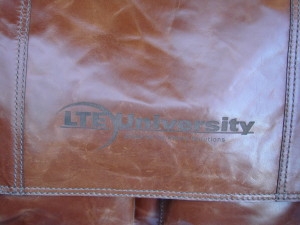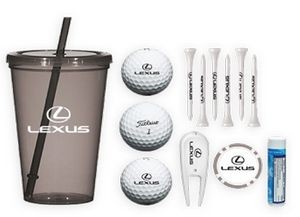More on decoration techniques.
There are many ways to decorate jackets, t-shirts, polos, caps, blankets and general garments. New techniques are being developed as technology becomes less expensive.
Laser Etching
This method uses a laser to burn the surface level of a garment for a tonal imprint. Laser etching is not suitable for all fabrics and is not as noticeable on dark color garments.
This process produces intricate detailing including fonts less than half an inch high and can go over seams and zippers. It can be used on high-pile fleece, denim, micro suede and some polyesters.
When etching on denim, the laser actually removes the pigment, leaving an off-white image. The picture shown above runs down a jacket sleeve. Laser etching can cover a large area.
The picture on the right shows leather etching.
We have used laser etching on leather portfolios and brief cases. This process gives a “branded†look. Leather debossing is normally for smaller areas so this is an option.
Screen Printing
Screen printing is one of the most common and inexpensive decoration applications. This is a process for printing images, text and patterns using stencils to transfer the design. Silk or nylon screens are used to allow ink to penetrate areas not blocked by the stencil. Several stencils can be used to incorporate a number of colors for a single print. Screen printing is great for large areas.
Discharge Printing
This process uses a special “discharge†ink that removes the shirt color. It can also replace the color. It produces a soft print and will not have bleed through from the shirt.
Embroidery
This decoration process uses needlework to create the design. The garment is hooped and thread is applied by the machine. The design is digitized by a computer. Embroidery can be done on large areas but most embroidery is applied to smaller areas.
Sublimation
This may also be called dye sublimation printing. Fabrics must be polyester-rich. Images are printed onto paper and then it is transferred by applying pressurized heat.
Direct to Garment
Images are printed using specialized or modified inkjet technology. Garments should be cotton-rich. This process is a little more expensive than screen printing.
Applique
Shaped pieces of fabric are sewn on a foundation fabric to form a design or pattern.



